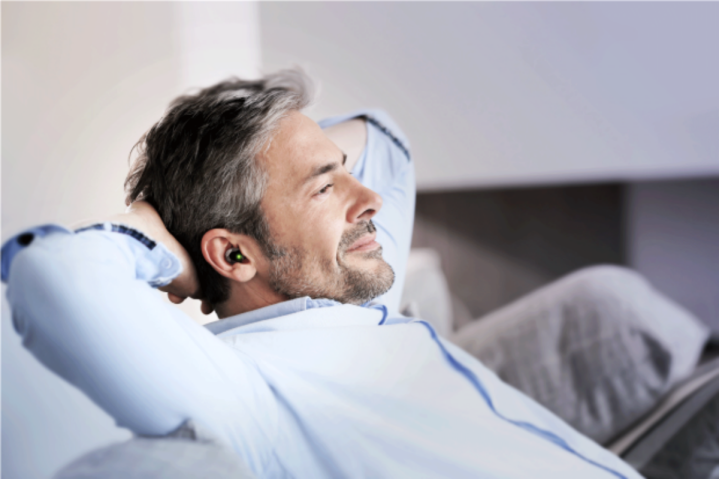
After ending an Indiegogo campaign with more than $320,000 from backers, 16 times more than its $20,000 flexible goal, the Olive appears to be as much a social statement as it is a digital device to help people hear better. Campaign backers will receive final versions of the Olive hardware with a beta version of the software in July and are asked to give the company feedback as a way to save the firm research and design costs leading up to the scheduled full product launch in December. Backers who were involved in the beta software will receive over-the-air (OTA) updates with the final software.
The Olive is a single earbud for people with moderate hearing loss — even though it’s called a hearing aid, the Olive is not intended for the severely hearing impaired. According to the company, a charged battery will last up to eight hours. Each Olive will come with its own charging case which stores enough power for two full charges. According to a company representative, current tests of the battery indicate it will fully charge in one hour and charge to 80 percent in about 30 minutes. The Olive isn’t intended for use with streaming media, although it can pair with a smartphone for hands-free conversations.
Since the Olive is sold as a single earbud, if you want an Olive for each ear, buy two and each will come with a separate charging case.
The Olive uses Bluetooth to pair with a smartphone app. A hearing test in the app matches each of 32 frequency bands in the Olive to your hearing profile. You can also use the app to readjust the settings later or for specific environments. According to the company, after your user profile is set up, “Then the algorithm equalizes the overall profile to optimize for your environment, taking into consideration noise canceling, on the fly.”
The Olive does not have preset profiles, so you may need to reset when you go places where the noise environment changes significantly. According to Olive Health, the device uses noise cancellation to reduce wind noise.
There is no communication between two Olive earbuds. Any issues of synchronization between earbuds and differences in sound latency — the delay between someone speaking and the time the device processes the sound — will need to be tested on an individual basis with adjustments up to you. Olive Health told Digital Trends there is no discernible latency as each earbud processes sound in real time. Each Olive earbud is a mono sound source, so if you have one in each ear, you won’t hear sound in stereo, but rather mono in each ear.
Most companies working on hearing assistance devices are careful not to refer to them as “hearing aids,” a term that puts them in the sights of the FDA and the medical community. In an answer to a question on the Indiegogo campaign, however, an Olive Health representative specifically said it is not making a personal sound amplifier, but a hearing aid, and that the firm sees the FDA as only a small hurdle.
The company told Digital Trends it has “gone through the preliminary process” for FDA approval so there will be no delays. when the Olive launches with final software. In answer to a question about whether Olive Health considers the Olive a medical device, a company representative wrote, “The Olive is not considered a medical device. In fact, our goal is for “hearing aids” (as in any device that aids hearing) to eventually be considered an accessory much like glasses (which are not medical devices) …We plan on entering the market as a fully FDA-approved hearing aid.”
At first glance, the Olive seems a bargain at $100. That price is for just one earbud, however. Other hearing assist devices such as Nuheara’s IQbuds and Doppler Labs’ Here One will cost $300 for two when they ship, including a single charging case. Those devices also pair up with near-field magnetic induction (NFMI) to synchronize the sound between ears, are designed for use with streaming audio, actively control ambient sound, and include preconfigured and customizable profile presets for different environments.
While we have had initial experiences with the Nuheara and Doppler Labs wearables, the hearing assistance wearable category is just taking off this year and we will hold our final calls on those and other products pending fuller testing. We can see usage cases for a single Olive earbud for someone with hearing loss in only one ear or who has total hearing loss in the other ear.
Story originally published in January 2017. Updated on 01/12/17 by Bruce Brown: Added response from Olive Health about FDA approval, hardware status, and battery charging time.
Editors' Recommendations
- How to buy over-the-counter hearing aids
- JLab’s new earbuds are smaller than a dime, and it says $99 hearing aids are on the way
- These are Sony’s first over-the-counter hearing aids
- Expect to hear more about hearing, now that the FDA’s new hearing aid rules are here
- Olive Max provides low-cost alternative to hearing aids




